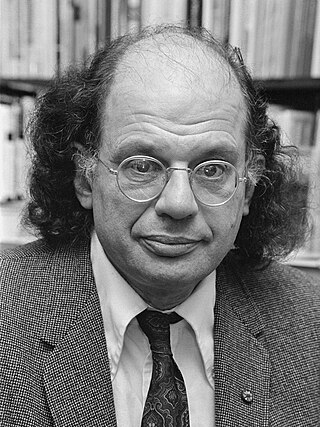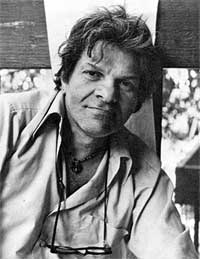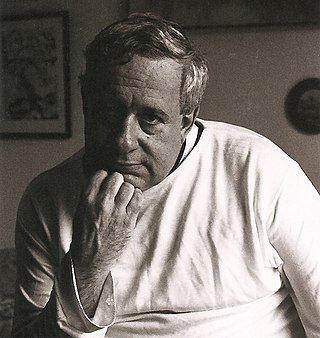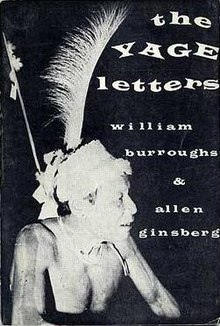
Irwin Allen Ginsberg was an American poet and writer. As a student at Columbia University in the 1940s, he began friendships with Lucien Carr, William S. Burroughs and Jack Kerouac, forming the core of the Beat Generation. He vigorously opposed militarism, economic materialism, and sexual repression, and he embodied various aspects of this counterculture with his views on drugs, sex, multiculturalism, hostility to bureaucracy, and openness to Eastern religions.

Jean-Louis Lebris de Kérouac, known as Jack Kerouac, was an American novelist and poet who, alongside William S. Burroughs and Allen Ginsberg, was a pioneer of the Beat Generation.

Kathy Acker was an American experimental novelist, playwright, essayist, and postmodernist writer, known for her idiosyncratic and transgressive writing that dealt with themes such as childhood trauma, sexuality and rebellion. Her writing incorporates pastiche and the cut-up technique, involving cutting-up and scrambling passages and sentences; she also defined her writing as existing in the post-nouveau roman European tradition. In her texts, she combines biographical elements, power, sex and violence.

William Seward Burroughs II was an American writer and visual artist. He is widely considered a primary figure of the Beat Generation and a major postmodern author who influenced popular culture and literature. Burroughs wrote eighteen novels and novellas, six collections of short stories and four collections of essays, and five books have been published of his interviews and correspondences; he was initially briefly known by the pen name William Lee. He also collaborated on projects and recordings with numerous performers and musicians, made many appearances in films, and created and exhibited thousands of visual artworks, including his celebrated "Shotgun Art".

The Beat Generation was a literary subculture movement started by a group of authors whose work explored and influenced American culture and politics in the post-World War II era. The bulk of their work was published and popularized by Silent Generationers in the 1950s, better known as Beatniks. The central elements of Beat culture are the rejection of standard narrative values, making a spiritual quest, the exploration of American and Eastern religions, the rejection of economic materialism, explicit portrayals of the human condition, experimentation with psychedelic drugs, and sexual liberation and exploration.

"Howl", also known as "Howl for Carl Solomon", is a poem written by Allen Ginsberg in 1954–1955 and published in his 1956 collection Howl and Other Poems. The poem is dedicated to Carl Solomon.

Gregory Nunzio Corso was an American poet and a key member of the Beat movement. He was one of the youngest of the inner circle of Beat Generation writers.

Naked Lunch is a 1959 novel by American writer William S. Burroughs. The book is structured as a series of loosely connected vignettes, intended by Burroughs to be read in any order. The novel follows the junkie William Lee, who takes on various aliases, from the U.S. to Mexico, eventually to Tangier and the dreamlike Interzone.

The Soft Machine is a 1961 novel by American author William S. Burroughs. It was originally composed using the cut-up technique partly from manuscripts belonging to The Word Hoard. It is the first part of The Nova Trilogy.
Carl Solomon was an American writer. One of his best-known pieces of writing is Report from the Asylum: Afterthoughts of a Shock Patient.

John Burroughs was an American naturalist and nature essayist, active in the conservation movement in the United States. The first of his essay collections was Wake-Robin in 1871.

Junkie: Confessions of an Unredeemed Drug Addict, or Junky, is a 1953 novel by American Beat generation writer William S. Burroughs. The book follows "William Lee" as he struggles with his addiction to morphine and heroin. Burroughs based the story on his own experiences with drugs, and he published it under the pen name William Lee. Some critics view the character William Lee as simply Burroughs himself; in this reading, Junkie is a largely-autobiographical memoir. Others view Lee as a fictional character based on the author.

Queer is an early short novel by William S. Burroughs. It is partially a sequel to his earlier novel, Junkie, which ends with the stated ambition of finding a drug called yage. Queer, although not devoted to that quest, does include a trip to Latin America looking for the substance.
Grove Press is an American publishing imprint that was founded in 1947. Imprints include: Black Cat, Evergreen, Venus Library, and Zebra. Barney Rosset purchased the company in 1951 and turned it into an alternative book press in the United States. He partnered with Richard Seaver to bring French literature to the United States. The Atlantic Monthly Press, under the aegis of its publisher, Morgan Entrekin, merged with Grove Press in 1993. Grove later became an imprint of the publisher Grove/Atlantic, Inc.

Harold Norse was an American writer who created a body of work using the American idiom of everyday language and images. One of the expatriate artists of the Beat generation, Norse was widely published and anthologized.

Alan Ansen was an American poet, playwright, and associate of Beat Generation writers. He was a widely read scholar who knew many languages. Ansen grew up on Long Island and was educated at Harvard. He worked as W. H. Auden's secretary and research assistant in 1948–49; he was the main author of the chronological tables in Auden's The Portable Greek Reader and Poets of the English Language.
Oliver C. G. Harris is a British academic and Professor of American Literature at Keele University. He is the author and editor of seventeen books, including a dozen editions of works by William S. Burroughs: Letters, 1945–1959 (1993), Junky: the definitive text of Junk (2003), The Yage Letters Redux (2006), Queer (2010), The Cut-Up Trilogy, The Soft Machine, Nova Express, and The Ticket That Exploded (2014), Blade Runner: A Movie (2019), Minutes to Go Redux (2020), The Exterminator Redux (2020), BATTLE INSTRUCTIONS (2020) and Dead Fingers Talk (2020). In 2022, he published two short books of essays, A Burroughs Triptych and Making Naked Lunch and in 2023 a collaborative hybrid of criticism and memoir, Two Assassins: William Burroughs/Hassan Sabbah. He is President of the European Beat Studies Network.
Jack Kerouac was an American novelist and poet. He is considered a literary iconoclast and, alongside William S. Burroughs and Allen Ginsberg, a pioneer of the Beat Generation. Kerouac is recognized for his method of spontaneous prose. Thematically, his work covers topics such as Catholic spirituality, jazz, promiscuity, Buddhism, drugs, poverty, and travel. Kerouac used the name "Duluoz Legend" to refer to his collected autobiographical works.
This is a bibliography of the works of William S. Burroughs.

The nature fakers controversy was an early 20th-century American literary debate highlighting the conflict between science and sentiment in popular nature writing. The debate involved important American literary, environmental and political figures. Dubbed the "War of the Naturalists" by The New York Times, it revealed seemingly irreconcilable contemporary views of the natural world: while some nature writers of the day argued as to the veracity of their examples of anthropomorphic wild animals, others questioned an animal's ability to adapt, learn, teach, and reason.














